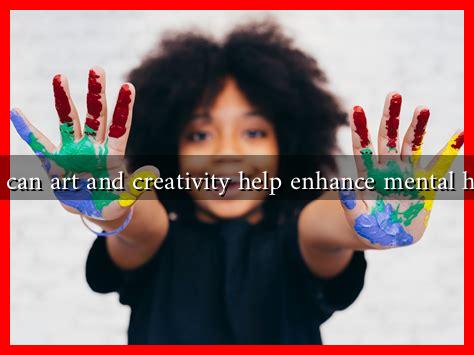-
Table of Contents
How Can Art and Creativity Help Enhance Mental Health?
In recent years, the connection between art, creativity, and mental health has gained significant attention from researchers, therapists, and the general public alike. As mental health issues continue to rise globally, exploring alternative methods for enhancing well-being has become increasingly important. This article delves into how engaging in artistic activities can positively impact mental health, supported by research, case studies, and practical examples.
The Therapeutic Power of Art
Art therapy is a well-established field that utilizes creative expression as a therapeutic tool. It allows individuals to communicate feelings and experiences that may be difficult to articulate verbally. The therapeutic power of art can be understood through several key mechanisms:
- Emotional Expression: Art provides a safe outlet for expressing emotions, helping individuals process feelings of sadness, anger, or anxiety.
- Stress Reduction: Engaging in creative activities can lower cortisol levels, the hormone associated with stress, leading to a more relaxed state.
- Improved Self-Esteem: Completing an art project can foster a sense of accomplishment and boost self-confidence.
- Mindfulness and Presence: Creating art encourages individuals to focus on the present moment, promoting mindfulness and reducing rumination.
Case Studies and Research Findings
Numerous studies have highlighted the positive effects of art on mental health. For instance, a study published in the journal Art Therapy found that participants who engaged in art-making reported lower levels of anxiety and depression. Another research project conducted by the University of Westminster revealed that just 45 minutes of creative activity can significantly reduce stress levels.
One compelling case study involved a group of veterans suffering from PTSD. Through a structured art therapy program, participants were able to express their traumatic experiences through painting and sculpture. The results showed a marked decrease in PTSD symptoms, with many veterans reporting improved emotional regulation and coping skills.
Creative Outlets Beyond Traditional Art Therapy
While art therapy is a formalized approach, creativity can be harnessed in various forms to enhance mental health. Here are some creative outlets that individuals can explore:
- Writing: Journaling or creative writing can help individuals articulate their thoughts and feelings, providing clarity and emotional relief.
- Music: Playing an instrument or singing can be a powerful way to express emotions and connect with others.
- Dance: Movement and dance can release endorphins, improve mood, and serve as a form of non-verbal expression.
- Crafting: Engaging in crafts like knitting, pottery, or woodworking can provide a sense of accomplishment and focus.
Statistics Highlighting the Impact of Art on Mental Health
Statistics further underscore the importance of art in mental health. According to a report by the World Health Organization (WHO), mental health disorders affect one in four people globally. However, engaging in creative activities can serve as a preventive measure. A survey conducted by the National Endowment for the Arts found that individuals who participate in the arts are 50% more likely to report good mental health compared to those who do not.
Practical Tips for Incorporating Art into Daily Life
Incorporating art and creativity into daily life doesn’t require formal training or artistic talent. Here are some practical tips:
- Set Aside Time: Dedicate a specific time each week for creative activities, whether it’s painting, writing, or crafting.
- Join a Community: Participate in local art classes or online creative groups to connect with others and share experiences.
- Experiment: Try different forms of art to discover what resonates with you, whether it’s digital art, photography, or poetry.
- Be Non-Judgmental: Focus on the process rather than the outcome. Allow yourself to create without the pressure of perfection.
Conclusion
Art and creativity offer powerful tools for enhancing mental health. Through emotional expression, stress reduction, and improved self-esteem, engaging in creative activities can lead to significant improvements in well-being. As research continues to support the therapeutic benefits of art, individuals are encouraged to explore their creative sides as a means of fostering mental health. Whether through formal art therapy or personal creative pursuits, the journey of self-expression can be a transformative experience.
For more information on the benefits of art therapy, you can visit the [American Art Therapy Association](https://arttherapy.org/).

